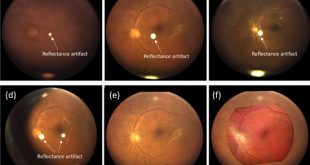J Comput Chem. 2013;34(11):915-27.
Zhang X, Wong SE, Lightstone FC.
Biosciences & Biotechnology Division, Physical and Life Sciences Directorate, Lawrence Livermore National Lab, Livermore, CA 94550, USA.
Abstract
A mixed parallel scheme that combines message passing interface (MPI) and multithreading was implemented in the AutoDock Vina molecular docking program. The resulting program, named VinaLC, was tested on the petascale high performance computing (HPC) machines at Lawrence Livermore National Laboratory. To exploit the typical cluster-type supercomputers, thousands of docking calculations were dispatched by the master process to run simultaneously on thousands of slave processes, where each docking calculation takes one slave process on one node, and within the node each docking calculation runs via multithreading on multiple CPU cores and shared memory. Input and output of the program and the data handling within the program were carefully designed to deal with large databases and ultimately achieve HPC on a large number of CPU cores. Parallel performance analysis of the VinaLC program shows that the code scales up to more than 15K CPUs with a very low overhead cost of 3.94%. One million flexible compound docking calculations took only 1.4 h to finish on about 15K CPUs. The docking accuracy of VinaLC has been validated against the DUD data set by the re-docking of X-ray ligands and an enrichment study, 64.4% of the top scoring poses have RMSD values under 2.0 Å. The program has been demonstrated to have good enrichment performance on 70% of the targets in the DUD data set. An analysis of the enrichment factors calculated at various percentages of the screening database indicates VinaLC has very good early recovery of actives.
Copyright © 2013 Wiley Periodicals, Inc.
Additional Information
Fast and accurate screening of drug candidates from large databases is crucial forsuccessful computer-aided drug design efforts. As part of a continued effort to build an in-silico drug discovery pipeline on high performance computing (HPC)platforms, the Biochemical and Biophysical Systems group at the Lawrence Livermore National Laboratory (LLNL) has developed a parallel molecular docking program, named VinaLC.The study has been published and highlighted on the cover of the January 2013 edition of the Journal of Computational Chemistry [J. Comput. Chem. 34, 915-927]. The researchers adopted a mixed parallel scheme of both message passing interface (MPI) and multithreading to exploit the typical cluster-type supercomputers. The approach performs very well on current petascale supercomputers and potentially can be used on future exascale machines, without sacrificing accuracy. The resulting program scales up to more than 15K CPUs with very low overhead cost. One million flexible compound,molecular docking calculations took only 1.4 hours to finish. The VinaLC program has been integrated into the in-house, high-throughput, virtual drug discovery pipeline. The pipeline automates the receptor/target preparation, compoundpreparation, VinaLC docking calculation, and molecular mechanics/generalized Born surface area (MM/GBSA) rescoring[J. Chem. Inf. & Model. 54, 324–337].Using the HPC resources at LLNL,the rescoring of a total of 0.7 million compounds bound to proteins has been performed at an unprecedented level. The computer wall time for virtual screening has been reduced drastically on HPC machines, which increases the feasibility of screening extremely large compounddatabases with more accurate methods. The pipeline has been extensively employed in the drug design effortsin the group. To learn more about group’s work and VinaLC docking program, please visit: http://bbs.llnl.gov/ and http://catsid.llnl.gov/vinalc.
 Advances in Engineering Advances in Engineering features breaking research judged by Advances in Engineering advisory team to be of key importance in the Engineering field. Papers are selected from over 10,000 published each week from most peer reviewed journals.
Advances in Engineering Advances in Engineering features breaking research judged by Advances in Engineering advisory team to be of key importance in the Engineering field. Papers are selected from over 10,000 published each week from most peer reviewed journals.


